Foundations of a Republic: Governmental Architecture in the Greco-Roman Tradition, the Early United States and Providence
By Amanda Bauer
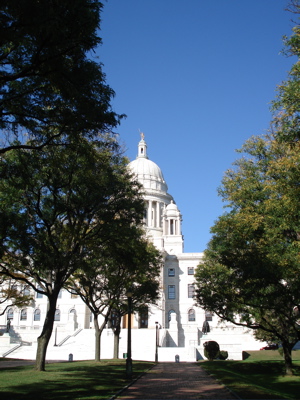
Neoclassicism really began in the United States under the influence of Thomas Jefferson. From the beginning of the new nation, Jefferson and others decided that Classical architectural forms (including from the Roman Republic) would be best for the new American Republic. This association was deemed especially fitting because the American constitution and governmental organization was based on Greco-Roman institutions (such as the Senate). American governmental buildings and monuments built in the Neoclassical tradition, then, are symbolic representations of democracy, freedom, and the Republic in America.
Providence Courthouse
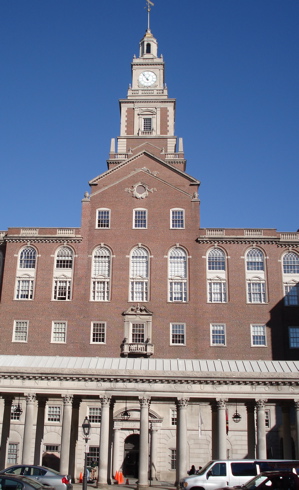
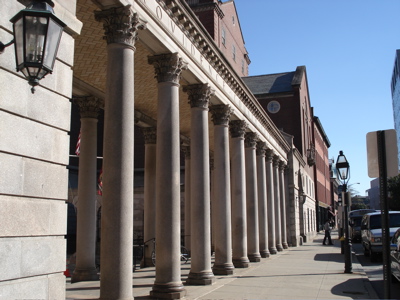
The peripheral colonnade includes Corinthian columns similar to those used in government buildings of the Greco-Roman tradition, including at the Roman senate and at the Pantheon (see below).
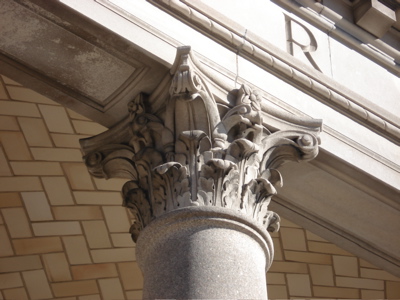
Detail of the Corinthian columns at the Providence Courthouse, including ornate acanthus leaves.
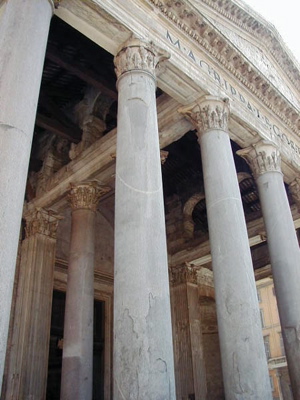
Pantheon (Rome, 125 BCE). Corinthian columns from the portico of the Pantheon, which are extremely similar to the columns of the courthouse.
The World War Monument
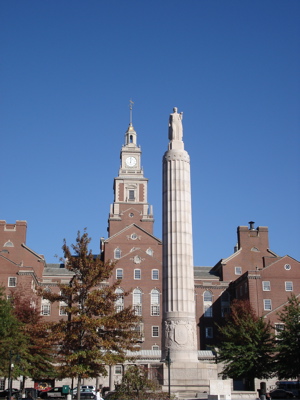
This column (approximately 100 feet in height) was erected on November 11, 1929 as a memorial for the citizens of Providence who served in World War I. It was designed by the architect Paul Cret. Paul C. Jennewein sculpted the low-relief frieze surrounding the base and possibly the crowning figure, which is identified as either an embodiment of Victory or Peace. Multiple aspects of this column have been taken from the Greco-Roman tradition. The erection of a column to commemorate victory in battle was a tradition of the Roman emperors such as Emperor Trajan's Column of Trajan (see below) which was erected to commemorate his victory in the Dacian Wars.
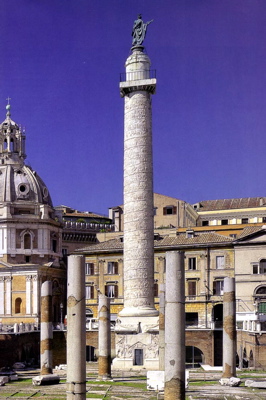
Column of Trajan (Apollodorus of Damascus, 113 BCE)
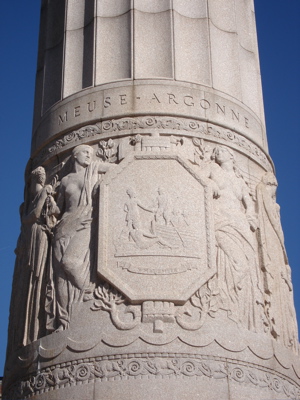
Base relief of the Providence War Monument.
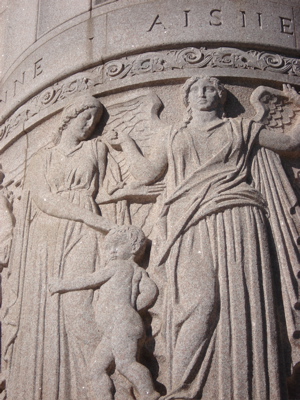
Western side of the base relief of the Providence War Monument. The winged central figure could be Victory, who was first personified as a winged female figure in Greece (see "Nike adjusting her sandal").
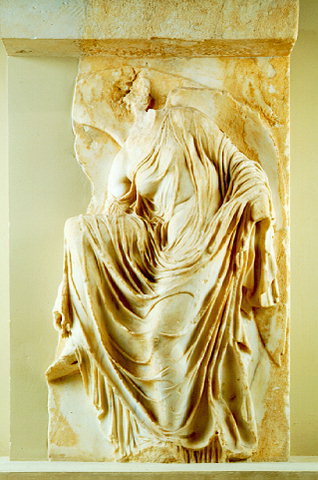
"Nike adjusting her sandal" (Athenian Acropolis, ca. 410 BCE). This is obviously a much higher relief than the base of the War column, but Nike (the Goddess of Victory) is also represented on the monument.
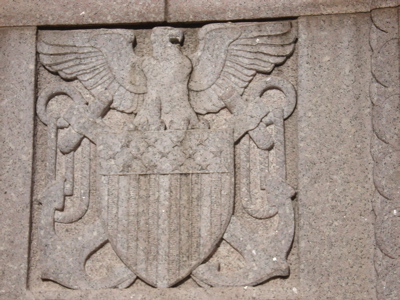
Eagle from the relief of the Providence War Monument. In the 1780s, the Continental Congress thought it important to assert the identity of the new union with a single symbol which would also be used as the symbol of the American Republic. The committee chose the American bald eagle, an adaptation of the ancient personfication of Zeus. The eagle was also decreed the symbol of the Senate and People of Rome in 102 BCE. Eagles are therefore a Neoclassical symbol representing traditions of authority (because it is associated with Zeus, king of the Greek gods) and government and democracy (because it was the symbol of the Roman senate). See Roman coin below.
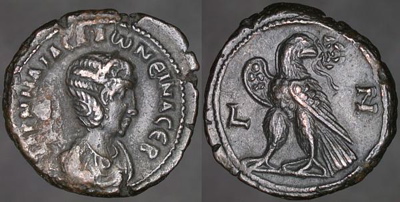
Roman Coin (4th c. CE)
Providence City Hall
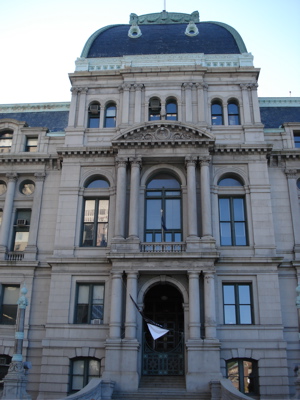
The City Hall was actually adapted from the French Neoclassical style which was popular beginning in Henri II's reign. The facade of the building includes one row of Doric columns, the second of Corinthian, and the third of Ionic (therefore showing all three orders on one facade).
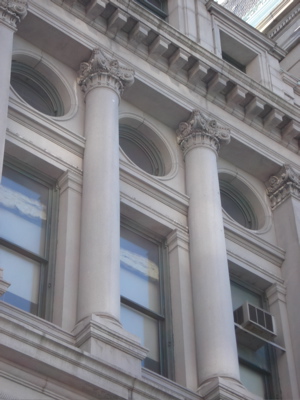
Detail of Ionic columns of Providence City Hall facade.
Rhode Island State House
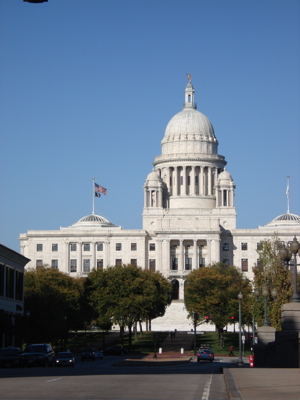
Construction on the State House was begun in 1896 and finished on June 11, 1904. It is one of the best examples of Neoclassical architecture in Providence. Many buildings in the U.S. such as this are based on the United States capital (see below). The facade was built in the Corinthian order.
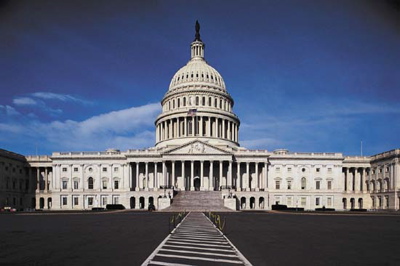
United States Capitol (Pierre Charles L'Enfant, Washington D.C.; originally constructed finishing in 1800). For his first project, Jefferson took inspiration from the Maison Carrée for the Virginia Statehouse. Jefferson’s hope was that his statehouse would inspire other pubic buildings in the new Republic and create an American architecture solidly based on the classical traditions of Greece and Rome. L’Enfant planned Washington in this style, and though the rectangular Maison Carée is not used in this case, the dome and frontal colonnade, facade, and pediment are all similar to Classical buildings such as the Pantheon (see below).
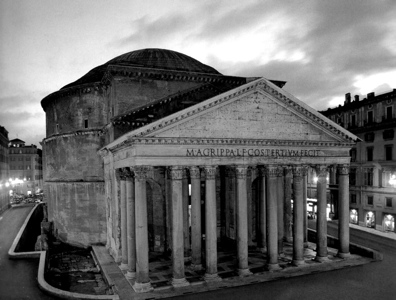
Pantheon (Rome, 125 BCE)
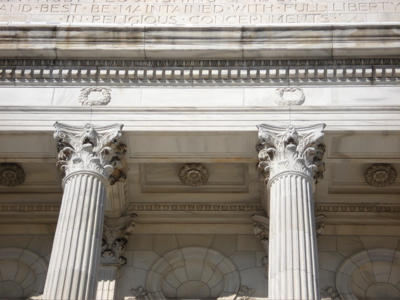
Detail of Corinthian columns on the facade of the Rhode Island State House.
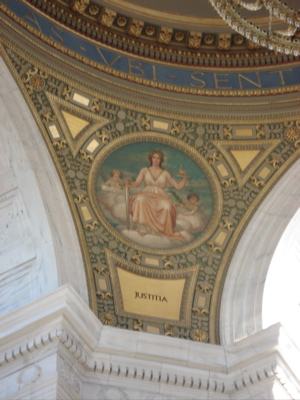
This personification of Justitia (Justice) was one of four Classical paintings on the ceiling inside the State House. The other three paintings were female personifications of "Educatio" (Education), Litera ("Literature"), and Commercium (Commerce), all in Greco-Roman garb and earing olive wreaths.
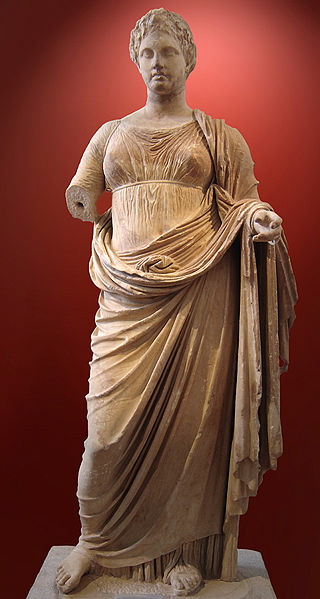
Our modern day depictions of Jusitita (also known as Lady Justice) are actually a hybrid of Greco-Roman mythological figures. Justitia's attributes parallel those of the Hellenic deity Themis (seen here), the embodiment of divine order, law and custom, in her aspect as the personification of the divine rightness of law. It was actually Themis' daughter Dike who was first thought to carry scales.
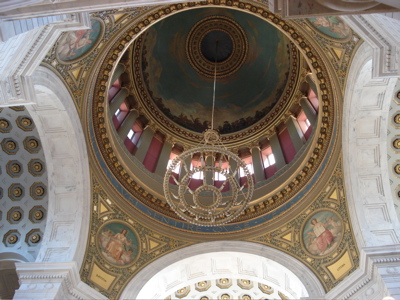
Inside the Dome of the Rhode Island Statehouse. As was mentioned above, the dome was taken from Classical architecture, as well as the coffered ceilings (see Pantheon dome).
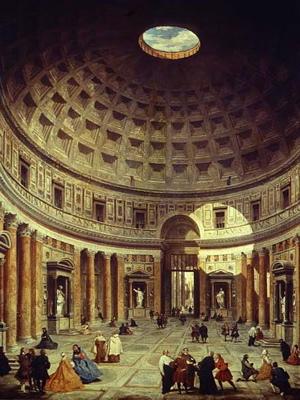
Inside the Dome of the Pantheon (Rome, 125 BCE).
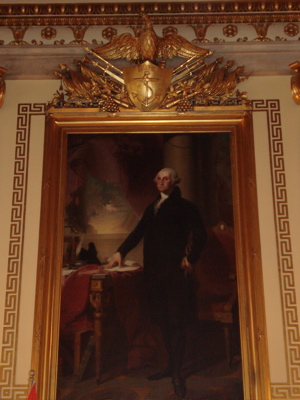
"Portrait of George Washington" (From the Rhode Island State House). Again, Classical forms are surrounding one of the most important members of our nation's history. The painting is surrounded by a Geometric meander, and above Washington is another eagle (the importance of which was mentioned above).
Posted at Nov 04/2007 08:51PM:
Keffie: Great thematic investigation of the (Neo)Classical roots of the American Republic! You made great connections using strong art historical and architectural foundations to your discussion.
Posted at Nov 05/2007 01:07AM:
Harry Anastopulos: I really like that you've chosen to start off your view of Neo-Classical Providence through the lens of American Greek Revival's history. Your images are extremely crisp as well as numerous...you've certainly covered a lot of Providence here and made some very specific connections (as provided by images of their Classical counterparts in the ancient world) with the Greek Past.
Posted at Nov 05/2007 06:04PM:
elise: I like the fact that you looked at some of the decoration inside of the state house as well, rather than focusing exclusively on the exterior architecture of Providence.
Posted at Nov 09/2007 12:11AM:
Carissa Racca: I really enjoyed your project, particularly the connections you make about the Greek and Roman Republic versus our Republic. Your knowledge of the subject is conveyed extremely well. It makes me appreciate these structures even more in a way. Not only were they aesthetically beautiful, but they were also erected in public spheres where they could be enjoyed by all.
Posted at Nov 09/2007 07:30PM:
Michael Bohl: I really like how you juxtaposed pictures from Providence with pictures from Rome and other original buildings, it really helped get the message across. I also like how you looked at elements inside the buildings rather than just the exterior. It is evident you did a lot of research.
Posted at Nov 17/2007 01:16PM:
Kellie Slater: Love the project. I really like all the pictures and their explanations are superb. Before reading your project I didn't know that the eagle was associated with Zeus... interesting and good to know I suppose. Overall great overview of neoclassical influences in Providence.
Posted at Dec 13/2007 06:45PM:
Rachel Griffith: This was a great topic (and well-exectuted too). Neoclassical architecture is so much a part of modern government buildings but one that we rarely stop to think about the true extent of or the symbolism behind.
